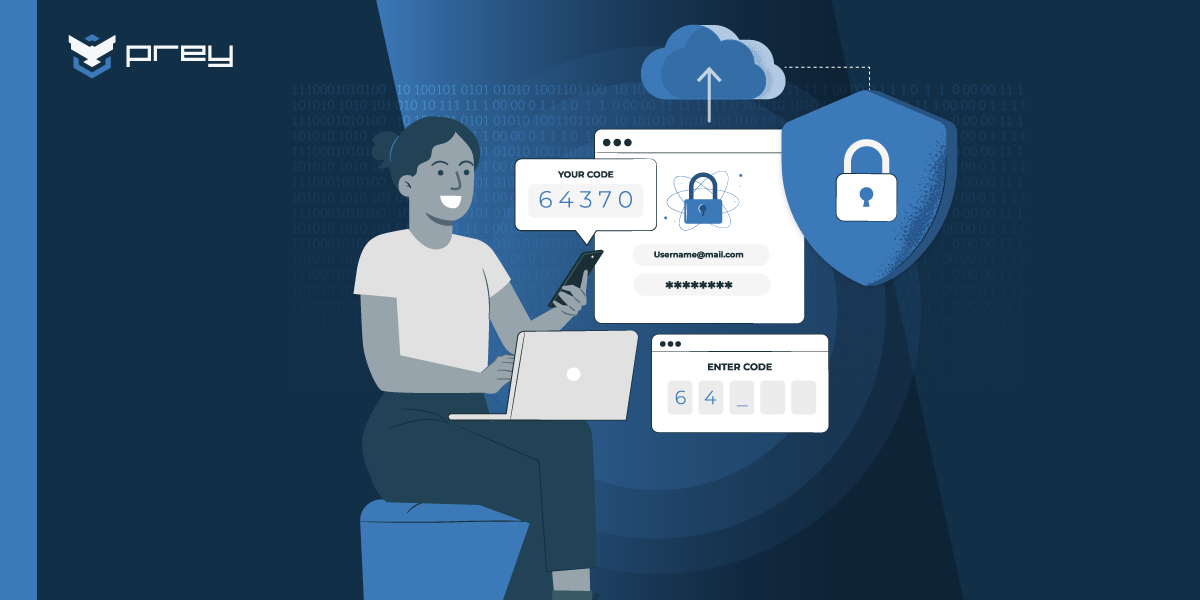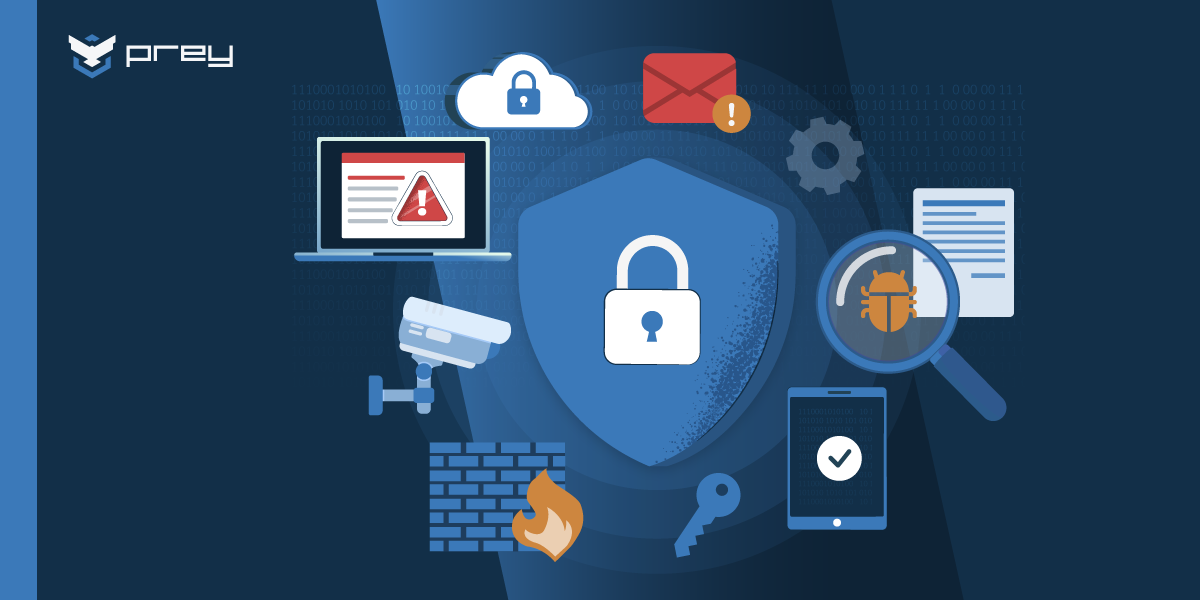If you process, store, or transmit payment card data, PCI Data Security Standard (DSS) compliance isn’t optional—it’s survival. Created by the PCI Security Standards Council (PCI SSC), this standard helps protect businesses from cardholder data breaches and the financial fallout they bring.
Whether you’re wrangling remote endpoints, managing hybrid infrastructures, or juggling audits, this guide will break down the essentials of PCI DSS—including what’s new in v4.0, why continuous compliance matters, and how to navigate the most common pitfalls like a pro.
Key takeaways
- PCI DSS compliance is essential for businesses handling cardholder data, as it protects against data breaches and enhances customer trust.
- Organizations must adhere to the 12 specific PCI DSS requirements, grouped under six strategic control objectives. They focus on secure networks, data protection, and strict access controls to safeguard payment information.
- PCOI DSS V4.0 emphasizes flexibility, continuous compliance, and risk-based approaches.
- PCI DSS compliance isn’t just about passing audits—it’s about building a secure-by-design business model.
Understanding PCI DSS: What it is and why it matters
PCI DSS (Payment Card Industry Data Security Standard) is a global standard developed by major credit card brands (Visa, Mastercard, American Express, Discover, and JCB). It was born from a need to standardize data protection practices in the payments ecosystem. These standards are intended to guarantee that companies handling cardholder data maintain a secure environment. Whether you’re a small business or a large enterprise, if you handle payment card data, PCI DSS compliance is essential.
The primary goal is to minimize the risk of data breaches by enforcing baseline security controls across the board.
But here’s the thing—PCI DSS compliance isn’t just about checking boxes. Businesses that maintain compliance see fewer security incidents, lower breach costs, and higher customer trust. With over two-thirds of consumers saying they wouldn’t return to a breached business, PCI DSS is both a shield and a competitive advantage.
Core principles of PCI DSS
At the heart of PCI DSS are six core principles that guide organizations in maintaining a secure payment environment. These principles serve as the foundation for the 12 specific PCI DSS requirements, helping businesses create robust security frameworks.
Don’t forget the shared responsibility model
Using AWS, Azure, Stripe, or a managed POS? You’re still responsible for PCI DSS compliance—even if someone else is handling your infrastructure or transactions.
Document your shared responsibility model. Clearly define who’s responsible for encryption, patching, access control, etc. And remember: if a breach occurs, your brand reputation is on the line—not your vendor’s.
Detailed breakdown of PCI DSS requirements
To achieve PCI DSS compliance, organizations must meet 12 specific requirements designed to protect cardholder data and maintain secure systems. These requirements cover a range of security measures, from maintaining a secure network to implementing strong access controls and regularly monitoring and testing networks. Each requirement addresses a critical aspect of information security, ensuring a comprehensive approach to protecting payment card data.
Secure network configuration
A secure network configuration is the cornerstone of protecting cardholder data. Firewalls play a crucial role in establishing a secure perimeter, preventing unauthorized access to sensitive information. A robust firewall configuration creates a strong first line of defense against potential threats. This not only helps in safeguarding cardholder data but also in maintaining a secure environment for all payment transactions.
Regularly testing and maintaining these security systems is equally important. Ensuring that firewalls and other security measures are up-to-date and functioning correctly helps in identifying and mitigating vulnerabilities before they can be exploited. Following these practices ensures a secure network that effectively protects financial account data and aligns with PCI DSS requirements.
Protecting stored cardholder data
Protecting stored cardholder data is a critical aspect of PCI DSS compliance. Encryption is a fundamental technique used to safeguard this data from unauthorized access. Encrypting stored cardholder data ensures that even if accessed without authorization, it remains unreadable and secure. This encryption should be applied not only to stored data but also to data transmitted over public networks.
Implementing robust security controls is essential for protecting stored cardholder data. This includes measures such as access controls, monitoring, and auditing to ensure that only authorized personnel can access sensitive information. These security controls create a secure environment that protects cardholder data from potential threats and maintains PCI DSS compliance.
Furthermore, businesses must maintain an inventory of all systems and hardening procedures to ensure a comprehensive approach to data security. This includes documenting user access, roles, and privilege levels, as well as using video cameras and electronic access control mechanisms to monitor physical access to cardholder data systems. Implementing these measures helps organizations protect stored cardholder data effectively and maintain a secure environment.
Encryption of transmitted data
Encrypting cardholder data during transmission is crucial for maintaining data security over public networks. This ensures that sensitive information remains protected from unauthorized access during transit. Encrypting transmitted data prevents potential breaches and ensures that we transmit cardholder data securely at all stages of the payment process.
Implementing encryption protocols such as SSL/TLS helps in protecting data during transmission. These protocols create a secure channel for data exchange, ensuring that cardholder data remains confidential and secure. These encryption practices help businesses align with PCI DSS requirements and protect sensitive cardholder data from potential threats.
Regularly updating security software
Regularly updating security software is essential for detecting and mitigating vulnerabilities against evolving malware threats. According to PCI DSS Requirement 5, businesses must use and regularly update anti-virus software to protect against known malware. This includes implementing anti-virus solutions on workstations, laptops, and mobile devices to ensure comprehensive protection.
A robust vulnerability management program is also crucial for maintaining PCI DSS compliance. This involves regularly applying security patches and updates to systems and applications, ensuring that all components of the card data environment are protected from potential threats. Following these practices ensures a secure environment that protects cardholder data and aligns with PCI DSS requirements.
Compliance levels and validation
There are four levels of PCI compliance, categorized based on the number of card transactions processed annually.
Level 1 compliance applies to businesses processing over six million transactions yearly and requires an annual audit by a Qualified Security Assessor (QSA). This ensures that large organizations maintain a high level of security and compliance with PCI DSS requirements.
Level 2 merchants must complete a Self-Assessment Questionnaire (SAQ) and may require an onsite audit if they experience a data breach.
Level 3 compliance, merchants are required to perform a quarterly network scan and complete an SAQ, although penetration tests are not mandatory.
Level 4 compliance has the least stringent requirements, including the completion of an appropriate SAQ and quarterly vulnerability scans.
Accurate validation of compliance is essential for maintaining PCI DSS standards. Inaccuracies in completing SAQs can lead to compliance failures. Therefore, businesses must ensure they understand the requirements and complete the correct SAQ for their level. Coordinating with service providers or using specific reporting tools helps businesses determine their PCI compliance levels and validate their compliance effectively.
Benefits and challenges of achieving PCI DSS compliance
Achieving PCI DSS compliance offers numerous benefits but also presents significant challenges for businesses. Being PCI DSS compliant demonstrates a commitment to protecting sensitive payment information, which can boost customer confidence and loyalty. As data breaches become increasingly common, maintaining PCI DSS compliance can set businesses apart as secure and trustworthy entities. This, in turn, can lead to increased customer retention and a competitive advantage in the market.
However, achieving and maintaining compliance can be a challenging task:
- Improper network segmentation: Flat networks expose too much if compromised. Use VLANs or microsegmentation.
- Weak asset inventory: You can’t protect what you don’t know you have. Get a full inventory of endpoints, servers, and data flows.
- Neglecting physical controls: Door locks, badge readers, and CCTV matter. A USB stick in the wrong hands can still take you down.
- Treating PCI as a one-time event: Compliance isn’t annual—it’s continuous.
Despite these challenges, the benefits of PCI DSS compliance, such as reduced liability in the event of a data breach and enhanced customer trust, make it a worthwhile investment.
Best practices for maintaining PCI DSS compliance
Maintaining PCI DSS compliance requires a proactive approach to data security. One of the best practices is to maintain an information security policy that outlines responsibilities and expectations for protecting cardholder data. This policy must be reviewed at least annually, and all users must read and acknowledge it to ensure compliance.
Regular monitoring and testing of networks help detect potential security issues before they can be exploited. Additionally, protecting removable or portable media containing cardholder data and retaining access logs for a minimum of 90 days are essential practices for maintaining a secure environment.
Following these best practices helps businesses ensure they remain PCI DSS compliant and protect sensitive cardholder data effectively.
PCI DSS v4.0: What’s new (and what you need to act on)
The PCI SSC released version 4.0 to better reflect today’s threat landscape. The full transition deadline? March 2025. Here are the highlights:
- Customized Implementation: Organizations can now show compliance through equivalent, risk-based controls (with proper documentation).
- Continuous Compliance: v4.0 shifts focus from annual checkboxes to ongoing security practices.
- Stronger Authentication: Multi-factor authentication (MFA) is required for all access into the cardholder data environment (CDE), not just admin access.
- Enhanced Logging & Monitoring: Requirement 10 has been overhauled to promote early breach detection.
Pro Tip: Start adopting 4.0 controls now—even if you’re still being assessed under 3.2.1. It’ll make the transition smoother (and your security stronger).
Summary
In conclusion, PCI DSS compliance is essential for businesses handling payment card data. By adhering to the 12 specific requirements, organizations can protect cardholder data and maintain a secure environment for payment transactions. The core principles of PCI DSS, including secure network configuration, protecting stored cardholder data, and encrypting transmitted data, provide a comprehensive framework for data security.
Despite the challenges, the benefits of achieving PCI DSS compliance, such as reduced risk of cyber-attacks and enhanced customer trust, make it a worthwhile investment. By following best practices and maintaining a proactive approach to data security, businesses can ensure they remain PCI DSS compliant and protect their sensitive cardholder data effectively.
Frequently asked questions
What is PCI DSS?
A global standard for securing payment card data across all environments—retail, e-commerce, cloud, and more.
Do I need to comply if I use a payment processor?
Yes. Even if you outsource transactions, you’re still responsible for protecting the cardholder data you touch.
How often do I need to validate compliance?
It depends on your merchant level, but PCI DSS encourages continuous validation—not just an annual fire drill.
What’s the difference between 3.2.1 and 4.0?
4.0 is more flexible and forward-looking. It promotes continuous security practices and allows for customized controls.
Is PCI DSS enough to stop all breaches?
No standard is bulletproof—but PCI DSS builds a strong baseline. Pair it with proactive threat detection and an incident response plan for best results.






